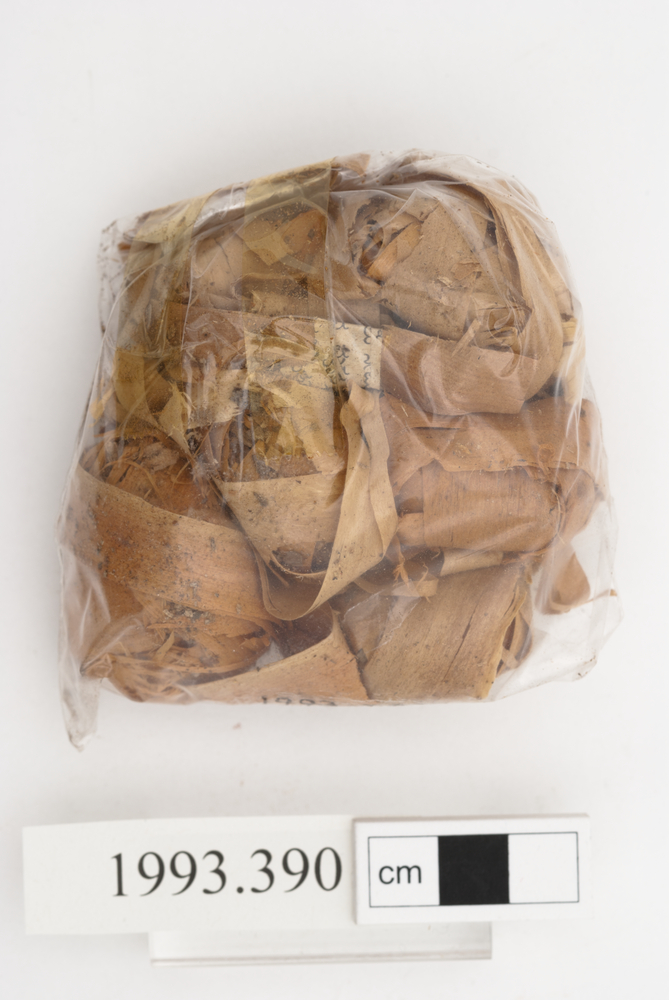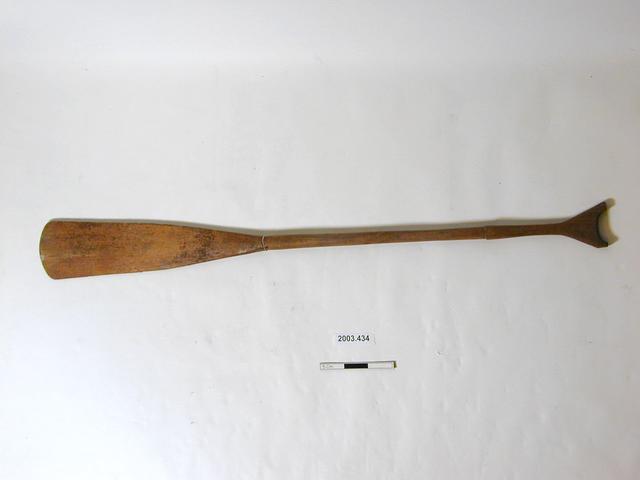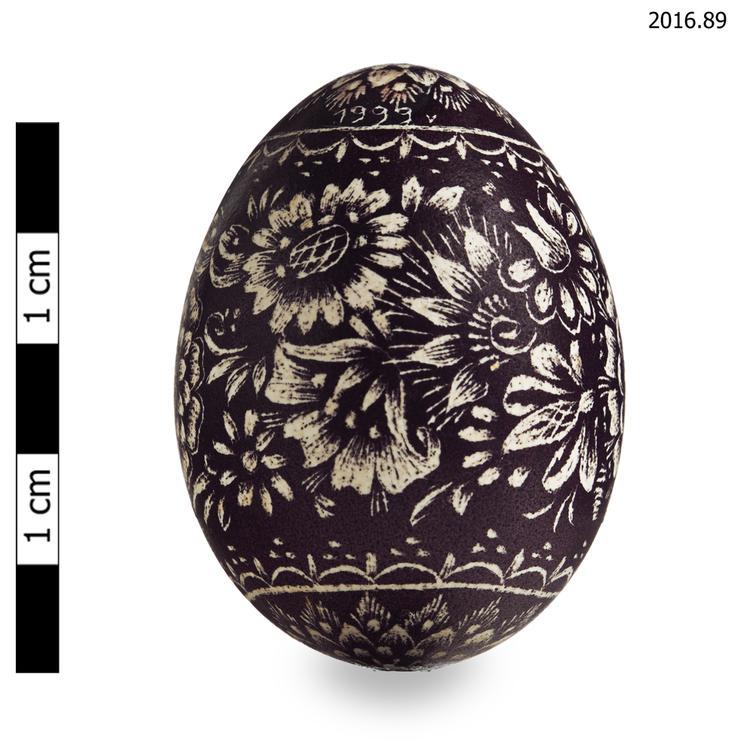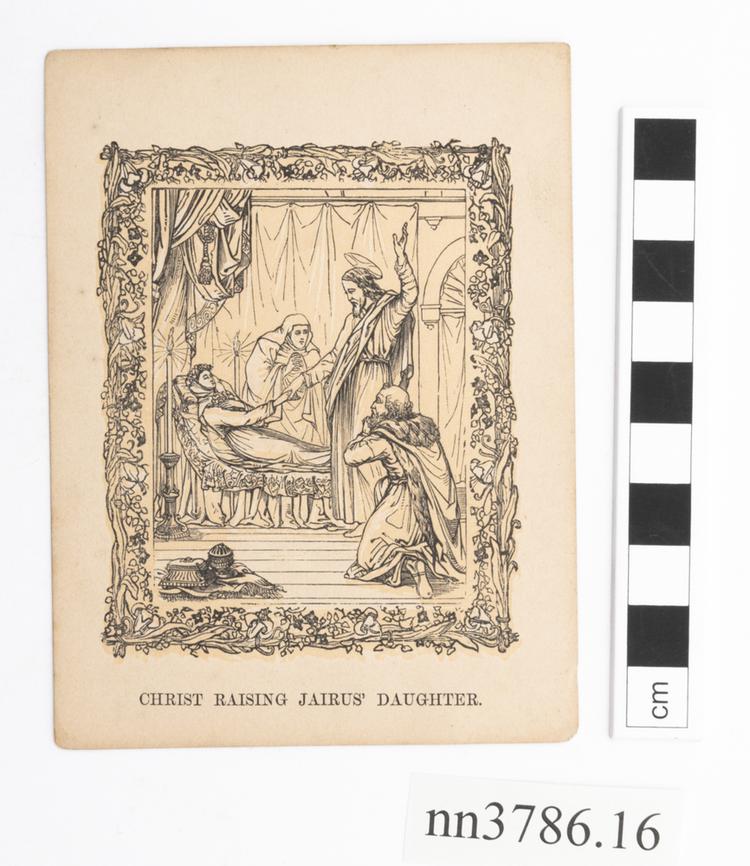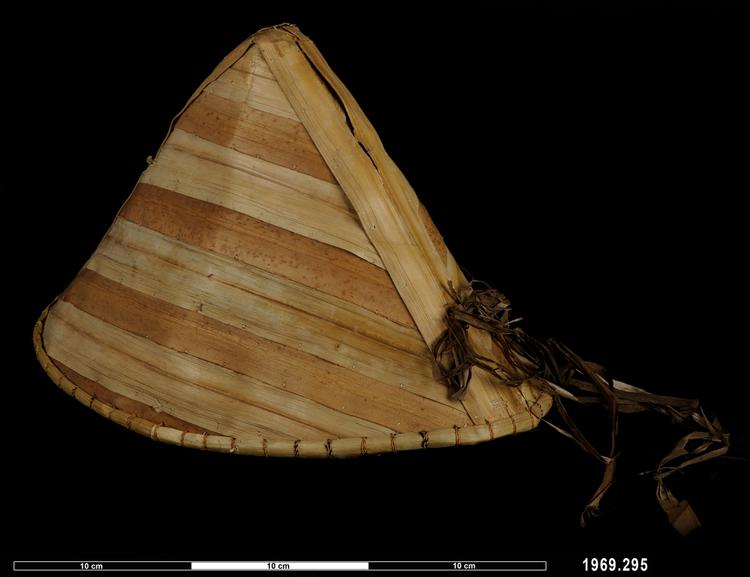
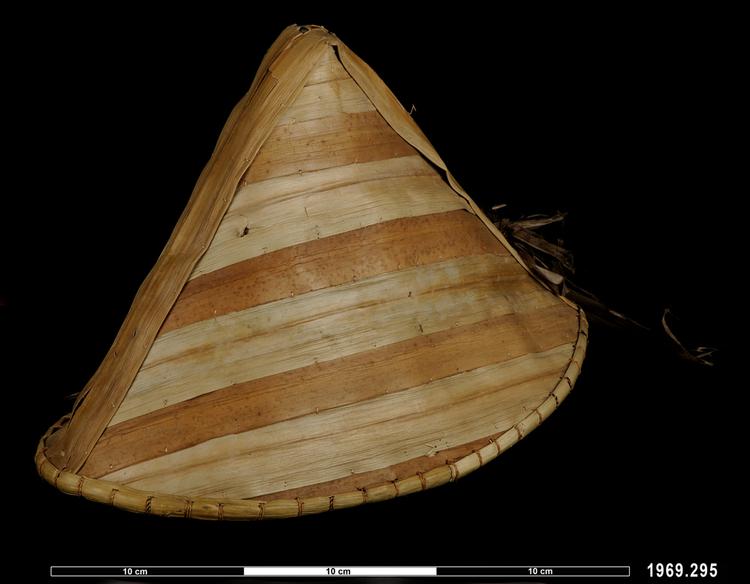
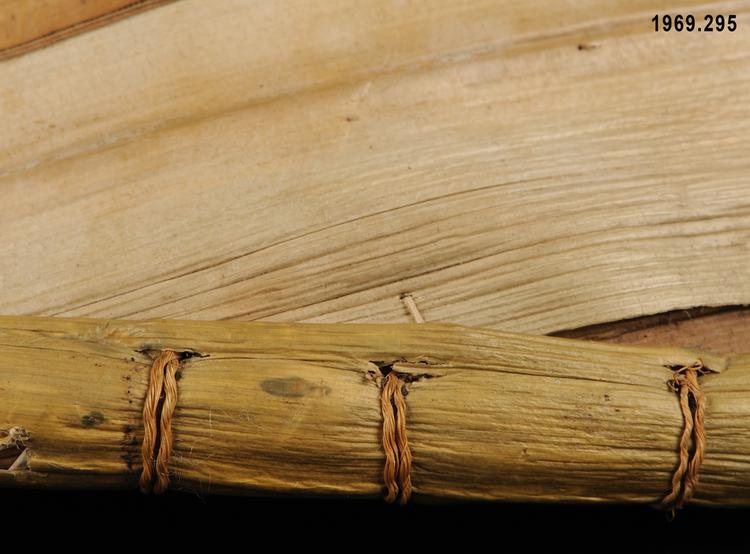
Fisherman’s hat of ovate section and conical form. The hat is constructed from a conical scaffold of coconut leaf midribs to which are tied an inner layer of orthogonal weaving in pandanus strips, and an outer layer of more durable banana leaf which is stitched to the inner layer in a lapped fashion to encourage water to run off. Inside the hat there is a band and a chin strap.
Fisherman’s Hat, Kiribati, Eastern Micronesia This hat takes a basically oval, conical shape and fits any head well. Inside, the hat was constructed around a solid conical scaffold of coconut leaf midribs. On the outside, a skin of very waterproof banana leaf strips (Musa spp.) is stitched to this framework, each strip overlapping the one below it like roof-tiles. Inside, a flat chequered matting technique is used to make a softer and more comfortable inner layer of Pandanus leaf strips. The hat has a chin-strap, which keeps it on in high winds, and this reflects the fact that this hat belonged to an i-Kiribati fisherman: such hats were worn during the day to protect the head from sunburn and the eyes from glare and spray, and during the night to protect the fisherman from the flying embers that blew off the torches used in night fishing. Coconut wood, banana leaf, Pandanus leaf. Early 20th Century. Formerly in the Collection of the Congregational Council for World Mission.



